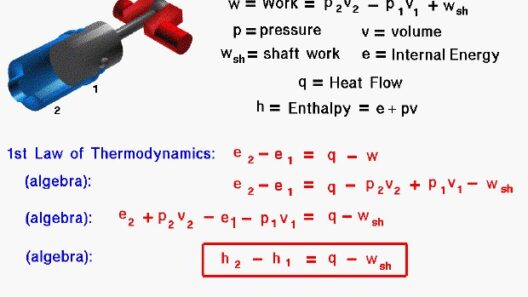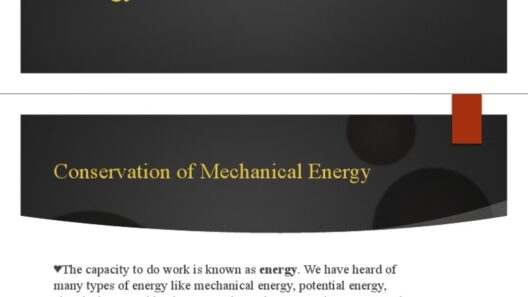Human energy conservation is an essential concept that distinctly impacts both individual well-being and the broader ecological landscape. As the relentless pace of contemporary life propels individuals into an incessant whirl of activity, it becomes imperative to re-evaluate how energy—be it physical, mental, or emotional—can be conserved and optimized. This balance between activity and rest is paramount, not only for personal health but also for fostering a sustainable environment.
At its core, human energy conservation involves understanding the finite nature of our energy reserves and employing strategies to extend their longevity. The idea transcends mere physical efficiency; it encompasses how we allocate our attention, emotional resources, and cognitive efforts throughout our daily routines. This intricate interplay between exertion and recuperation holds significant implications for our productivity, mental clarity, and overall satisfaction in life.
First and foremost, let us consider the intricate tapestry of human energy. Unlike mechanical energy, which can be produced and amplified almost indefinitely, human energy is inherently limited. It is vital to acknowledge that our energy is most potent when harmonized with our natural rhythms. Recognizing these intrinsic cycles enables us to harness our energies more judiciously.
One fundamental principle of human energy conservation is the establishment of a sustainable rhythm between activity and rest. In a fast-paced society, it is easy to succumb to the glorification of busyness, mistaking it for productivity. However, research has consistently shown that perpetual exertion yields diminishing returns. The concept of ultradian rhythms—periods of heightened focus followed by natural troughs—underscores the necessity for balanced cycles of work and rest. Scientists recommend that individuals engage in focused work for approximately 90 minutes, followed by a brief respite. This intricate dance facilitates cognitive rejuvenation, thus enhancing overall performance.
Moreover, the psychological ramifications of energy conservation warrant careful consideration. Cognitive overload can lead to a state of mental fatigue, diminishing creativity and problem-solving abilities. By consciously integrating rest periods—whether through short breaks, mindful meditation, or even a leisurely stroll—individuals can alleviate this burden. Such strategic intervals arise as a crucible for renewed focus, innovative thinking, and heightened emotional resilience.
The synergy between physical and emotional energy is also pivotal in understanding human energy conservation. Engaging in physical activity is often viewed solely through the lens of fitness; however, its role extends far beyond mere physical exertion. Exercise serves as a conduit for emotional release, dispelling stress and cultivating a sense of well-being. It promotes the secretion of endorphins, which function as natural mood enhancers. Striking a balance between physical activity and restorative practices—such as yoga or tai chi—invites a holistic approach to energy conservation. These modalities encourage a deepened connection with one’s body while fostering a tranquil mindset, optimizing the potential for recovery.
In addition to physical and mental considerations, social energy dynamics also play a critical role in conservation. Interactions with others can deplete energy reserves or replenish them, depending on the quality of the interactions. Toxic relationships can siphon emotional energy, leaving individuals drained and ineffective. Conversely, nurturing relationships imbued with mutual support can act as reservoirs of strength, enhancing overall resilience. Cultivating a network of supportive relationships not only conserves energy but also cultivates a sense of community—an invaluable component in the quest for sustainability.
The integration of technology presents both challenges and opportunities in the realm of human energy conservation. While the omnipresence of digital devices can encourage constant engagement, it is crucial to delineate boundaries to prevent cognitive depletion. Implementing digital detoxes or designated tech-free periods allows individuals to reflect, recharge, and reconnect with their intrinsic energies. Harnessing technology mindfully transforms it into a facilitator of energy conservation rather than a constant drain.
Furthermore, environmental considerations cannot be overstated. The principles of human energy conservation echo the broader ethos of environmental stewardship. Just as individuals seek to optimize their energy, society at large must confront the imperative of conserving natural resources. The parallels between personal energy conservation and ecological sustainability are striking. By adopting practices that promote resourcefulness—like reducing waste, utilizing renewable energies, and embracing circular economies—individuals become active participants in a larger narrative of conservation.
Human energy conservation, thus, emerges as a multifaceted paradigm that beckons for a shift in perspective. Embracing this concept invites curiosity about the broader implications of our everyday choices. It challenges each individual to reflect on their own patterns of activity and rest, cultivate resilience, and foster meaningful connections. The balance between human energy and rest is not merely a personal endeavor; it is intricately linked to our collective well-being and the sustainability of our planet.
In summary, the art of human energy conservation rests upon a nuanced understanding of our natural rhythms, the interplay of physical, emotional, and social energies, and a purposeful engagement with our environments—both personal and ecological. By striking a harmonious balance between activity and rest, individuals not only enhance their own lives but contribute to a movement that champions a sustainable future. Hence, embracing the principles of energy conservation promises not just personal advantage but a profound opportunity for communal advancement and ecological responsibility.






